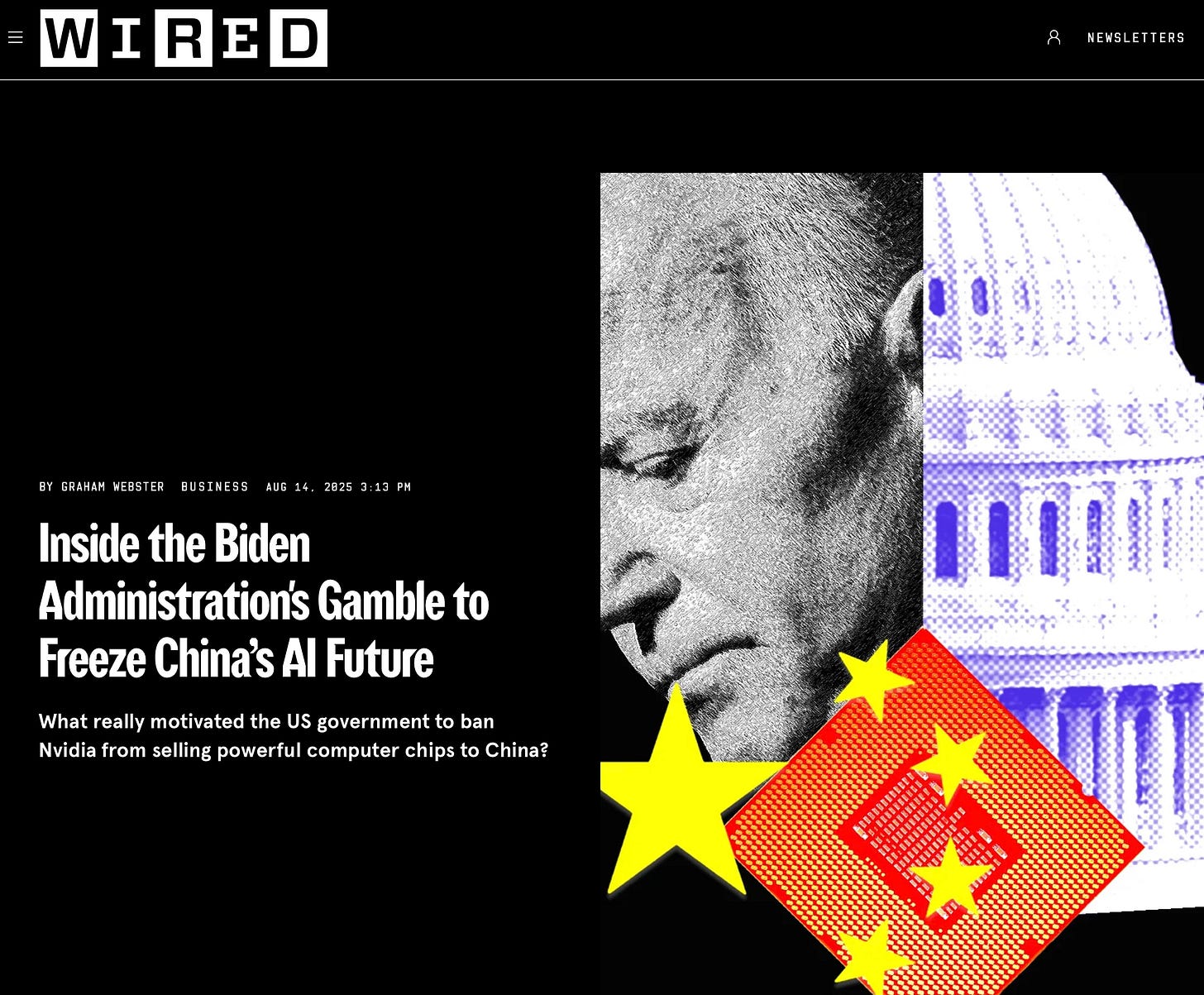Behind the Biden Chip Controls
My new piece for WIRED is out today
For several months, I have been working on satisfying a years-long curiosity. How specifically did the Biden administration decide to try to keep China from accessing cutting edge computer chips and chipmaking equipment? When they announced the move in October 2022, it marked a new phase in US-China relations and in the world’s reckoning with the geopolitics of artificial intelligence.

I’ve gathered some insights over the years, in significant part from discussions in academic or think tank settings that happened under Chatham House Rule or other restrictive ground rules. I wanted to understand more of the story and share it, because I believe that while it was widely reported and discussed, people often don’t know why this happened and certainly don’t get much of how. It turns out to be a pretty dramatic story—a small group of policy entrepreneurs with a then-rare focus on national security and AI join with a US-China tech thicket already under way and get something big done at what counts as light speed for Washington.
Today, after interviews with more than 10 former officials and experts, WIRED published my attempt to get the basics of the story out there. Some sources I had heard from in private settings, and I asked if they’d speak with me for this story. Others I reached out to for the first time, and they agreed. I’m grateful for all the time and insights they shared and expect more work to come out of this.
For now, head over to WIRED and check out the story.
Final note: Before I was whatever combination of scholar and wonk and writer I am now, I was a journalism major. And before that I was a tech enthusiast. It was a blast and a dream to work with WIRED on this, and I’m grateful to all the editors who had a hand in the piece, especially Louise Matsakis, who took the chance.
Now I hope you’ll all read and tell me what I’ve got right and (hopefully minimally) wrong, and what else you’d like to understand about this.
About Here It Comes
Here it Comes is written by me, Graham Webster, a research scholar and editor-in-chief of the DigiChina Project at the Stanford Program on Geopolitics, Technology, and Governance. It is the successor to my earlier newsletter efforts U.S.–China Week and Transpacifica. Here It Comes is an exploration of the onslaught of interactions between US-China relations, technology, and climate change. The opinions expressed here are my own, and I reserve the right to change my mind.

